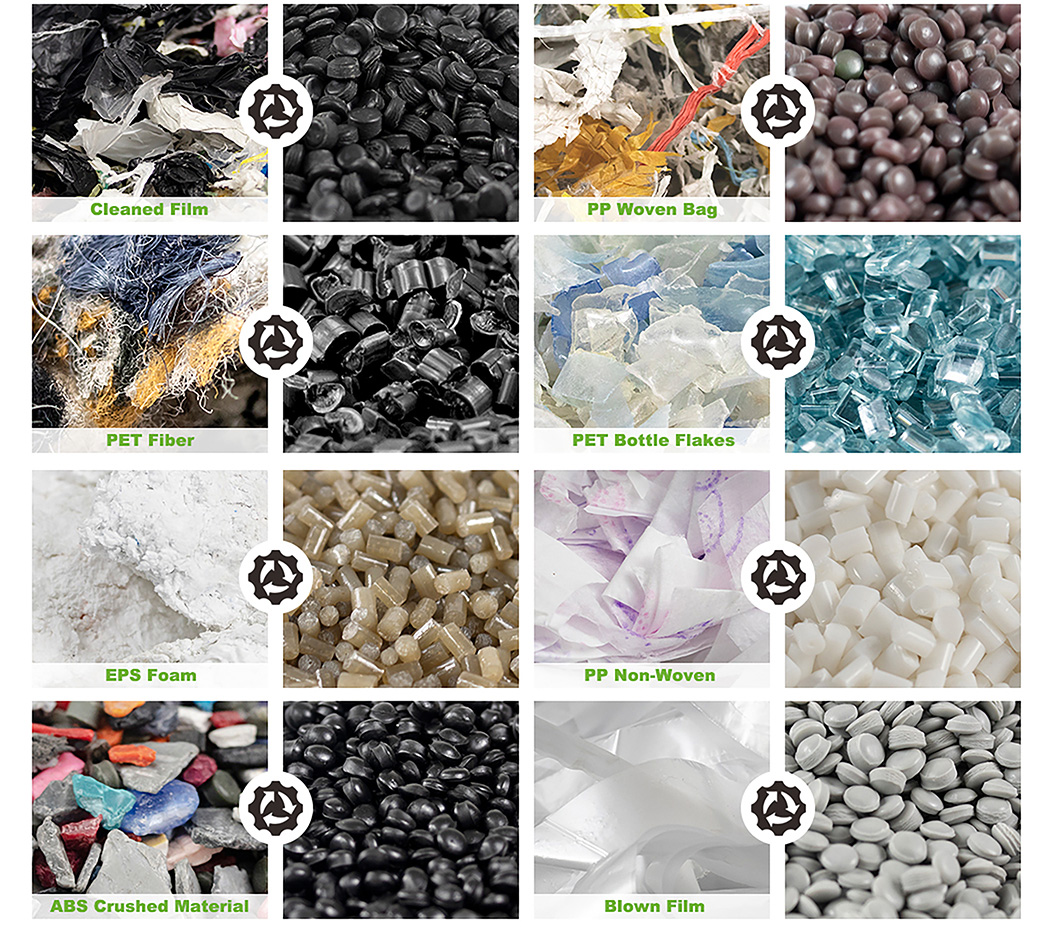Содержание статьи:
1. Что такое пластиковые частицы?
2. Выбор сырья и предварительная обработка
3. Плавление и смешивание
4. Технология формирования частиц
5. Охлаждение и затвердевание частиц
6. Просеивание и классификация частиц
7. Резюме
1. Что такое пластиковые частицы?
Пластиковые частицы являются основным сырьем для переработки и экструзии пластмасс. Эти частицы проходят ряд этапов обработки и в конечном итоге преобразуются в различные пластиковые изделия, такие как упаковочные материалы, строительные материалы, изоляторы для проводов и т. д. Качество и процесс производства пластиковых частиц напрямую влияют на характеристики конечного продукта.
2. Предварительная обработка сырья
Производство пластиковых частиц в первую очередь требует выбора сырья. Обычно используемое пластиковое сырье включает полиэтилен, полипропилен, поливинилхлорид и т. д. Выбор сырья должен основываться на требованиях к производительности желаемого продукта. Этапы предварительной обработки обычно включают удаление пыли и дробление сырья, чтобы гарантировать, что чистота и размер частиц сырья соответствуют производственным требованиям.
3. Плавление и смешивание
На этапе плавления сырье нагревается выше точки плавления для образования расплавленного состояния. Контроль температуры и времени во время процесса плавления имеет решающее значение для обеспечения полного плавления пластика и предотвращения термической деградации. Затем расплавленный пластик смешивается с помощью мешалки или шнекового экструдера для обеспечения равномерного распределения компонентов.
Шнек является одним из основных компонентов экструдера для пластика, который в основном выполняет функции пластификации, транспортировки и экструзии. В частности, шнек вращается и нагревается во время процесса экструзии, заставляя пластик попадать в спиральную канавку и подвергаться смешиванию, сдвигу и нагреванию, и, наконец, преобразует твердый пластик в расплавленное состояние для удовлетворения потребностей экструзионного формования. В то же время шнек также может сжимать расплавленный пластик и увеличивать плотность пластика для получения хороших эффектов формования. Кроме того, шнек также является транспортирующим инструментом в процессе экструзии пластика, проталкивая расплавленный пластик из спиральной канавки в головку, а затем разрезая на гранулы. Таким образом, скорость и производительность шнека напрямую влияют на качество пластиковых частиц. Кроме того, диаметр шнека также оказывает важное влияние на экструзионное производство. В общем, чем больше диаметр шнека, тем больше производительность экструдера. Однако чрезмерно большой диаметр шнека также может привести к тому, что пластик останется в полости слишком долго, что приведет к разложению и окислению, что скажется на качестве и производительности частиц.
4. Технология формирования частиц
Расплавленный пластик достигает головки экструзионной шлифовки после фильтрации примесей. Пластиковый гранулятор является ключевым звеном в процессе производства пластиковых частиц. Формирование частиц является ключевым звеном в процессе производства пластиковых частиц. Обычные методы резки включают: резку водяным кольцом, резку полосой, подводную резку и т. д.
5. Охлаждение и затвердевание частиц
Сформированные частицы подвергаются процессу охлаждения и затвердевания, чтобы гарантировать стабильность структуры частиц. Слишком высокая скорость охлаждения может привести к чрезмерному напряжению внутри частиц, что повлияет на качество продукта. Поэтому скорость охлаждения и температуру необходимо разумно контролировать, чтобы частицы поддерживали равномерное распределение температуры во время процесса охлаждения.
6. Просеивание и классификация частиц
Охлажденные и затвердевшие частицы необходимо высушить и просеять через вибросито для удаления влаги с частиц и частиц несоответствующего размера.
7. Резюме
Процесс производства пластиковых частиц включает в себя несколько звеньев, каждое из которых влияет на качество конечного продукта. Поэтому параметры и качество каждого звена должны строго контролироваться в процессе производства, чтобы гарантировать, что продукт соответствует стандартным требованиям. В то же время мы также должны уделять внимание защите окружающей среды и переработке для содействия устойчивому развитию пластмассовой промышленности.
Процесс производства пластиковых гранул
2024/02/02
входит в Новости отрасли